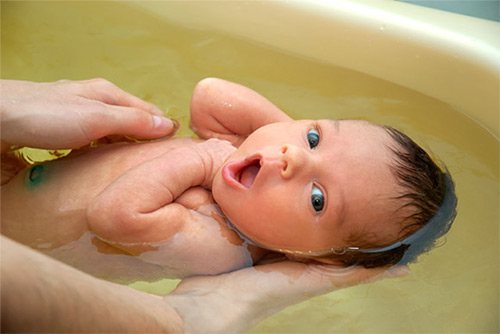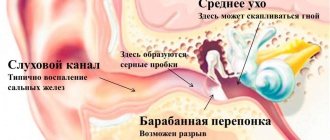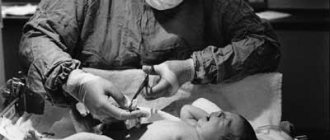The potassium permanganate solution can be replaced with:
| How can you replace potassium permanganate? | Description |
| Cutasept | For external treatment of skin wounds, Cutasept is used. Its active components penetrate deeply into the damaged epidermis and effectively destroy pathogenic microorganisms. The product is not used to treat mucous membranes. |
| Hydrogen peroxide | Hydrogen peroxide can temporarily reduce the number of bacteria on the skin, but does not have a sterilizing effect. During treatment on a damaged surface it can cause redness and burning. |
| Malavit | The drug is widely used in the treatment of gynecological diseases instead of potassium permanganate. It contains many natural components that have a beneficial effect on the body. The composition of the drug actively fights fungi and various infections. |
| Furacilin | Experts call furatsilin the closest analogue of potassium permanganate. The drug is suitable for internal and external treatment - it actively fights many bacteria and infections. It is used in the form of an alcohol or aqueous solution. The drug is also available in tablet form. |
| Chlorophylliptom | A natural remedy based on an extract from eucalyptus leaves. The drug is:
The essential oils included in its composition have a mucolytic effect. |
| A mixture of chamomile and string | A mixture of herbs is used by young mothers when bathing their newborn. It is necessary to mix an equal amount of components, take 1 glass of dried herb, pour a liter of boiling water. Infuse and strain, adding the infusion to the bath while bathing. |
Potassium permanganate is a powerful oxidizing agent, which, diluted with water, has found use in traditional and alternative medicine.
Today this drug is not commercially available; it can only be purchased with a doctor’s prescription. In this regard, many people have a question about what can replace potassium permanganate for treating wounds, treating other diseases, and even bathing a newborn.
There are several alternative options that will be good helpers and can replace the basic properties of potassium permanganate.
Kutasept
A bactericidal spray with fungicidal properties penetrates deeply into the skin and destroys bacteria, creating an invisible protective film on the damaged surface.
The drug is harmful to:
- enterococci;
- Proteus;
- candid;
- mycobacteria;
- coli.
It is used when treating sutures, disinfecting the skin before an injection or puncture. You can safely treat abrasions and cuts with the drug by applying it to a cotton swab, then to the damaged surface.
Disadvantages of using potassium permanganate solution

Opponents of bathing with potassium permanganate claim that it dries the skin and can lead to dermatitis. No one denies the presence of a drying effect, but no one forces the use of potassium permanganate when bathing until adulthood. And after the bath, you can use either a special oil for moisturizing or simple boiled vegetable oil.
Another opinion why swimming in potassium permanganate is harmful. After birth, the baby’s body begins to be populated with beneficial microbiota. The term microflora is not entirely appropriate here, since flora is the plant world, and we are talking about living microorganisms. Not only the intestines are colonized (this period is accompanied by colic). In girls, the microbiota of the genital organs begins to form. If the baby is often bathed with potassium permanganate, then it gets on the vaginal mucosa and external genitalia, causing drying and killing beneficial microorganisms.
Under no circumstances should a child be given a solution of potassium permanganate orally if they are poisoned. If potassium permanganate crystals are poorly dissolved in a hurry, they can cause burns and even perforation of the digestive tract. It's better to call an ambulance.
Herbal mixture of chamomile and string
The herbal mixture is suitable for bathing a newborn. Chamomile and string do not irritate the baby's delicate skin. They have sedative properties and can reduce the inflammatory process. They are often used during bathing instead of potassium permanganate.
You won’t have to look for a long time to find something to replace potassium permanganate with. There are good alternative options suitable for wound treatment and internal use. If you are not sure what problem needs to be dealt with, you should consult a doctor to prescribe the necessary therapy.
Is it possible to bathe a child in potassium permanganate?
When bathing a newborn at home, it is necessary to take into account that pathogenic bacteria or irritating substances can enter the baby’s body through an unhealed umbilical wound. Previously, pediatricians always recommended boiling water to reduce the risk, but this process is very labor-intensive. And here it is appropriate to remember about antiseptics. One of them is potassium permanganate.
It has been proven that chronic anal fissure is ischemic in origin due to poor blood supply and spasm of the internal anal sphincter. Nitric oxide donors such as glycerol trinitrate or isosorbide nitrate are known to induce chemical sphincterotomy leading to fissure healing.
Some patients experience a mild headache during therapy. In another study, topical diltiazem ointment was used as a chemical sphincterotomy agent for chronic anal fissure. The study claims that it provides significant levels of healing and reduces side effects.
Many people have a natural question: is it possible to bathe a baby in a solution of potassium permanganate; after all, it is a chemical substance. Answer: you can, if you use it correctly.
There is an opinion that a child can be bathed in water with the addition of potassium permanganate. And this is not without meaning, because it is potassium permanganate that is used in medicine for disinfecting and treating the skin.
Flaws. However, strict dietary restrictions are necessary during therapy to smooth stools. Headache during therapy is a serious problem with an incidence of up to 20-100%. Disadvantages: However, this treatment regimen requires special equipment and the procedure is very time-consuming. Moreover, the mechanism of action from the crack side is also not understood.
Dr. Komarovsky about bathing newborns
In the study, 93% of patients were found to be symptom-free one month after the procedure, and only a few had relapses. This procedure is said to be free from discharge or defect of continence, whether temporary or permanent. In another series, a perfume "retractor" or straight sigmoid balloon was used to dilate the sphincter.
How to properly dilute manganese and add it to water: concentration and general recommendations
Potassium permanganate is sold in the form of crystals. If one of them gets on wet skin, you can get a severe burn because this substance is very concentrated.
Potassium permanganate powder is concentrated crystals of a chemical that must be diluted in water
How to use potassium permanganate for bathing newborns?
This procedure can be repeated a couple of times until healing occurs. It takes 4 to 8 weeks for the crack to heal completely. Disadvantages: toxicity of drugs, accidental injection into surrounding tissues, constituting general poisoning, hematoma and infection, did not allow surgeons to regularly resort to this method.
Potassium permanganate for chickenpox in a baby: Komarovsky’s opinion - video
It has been one of the most favorable and accepted treatments for anal fissures. The main attraction for the procedure is its extreme simplicity. Because the procedure requires virtually no instruments, it could be performed in primary health centers or in underequipped hospitals located in small communities. Anal dilatation helps in healing the fissure by reducing the pressure of the anal canal. If done with due care, avoiding excessive manipulation, it does not cause any harm to the external anal sphincter as feared.
In order to avoid this when bathing a newborn, the permanganate powder should be diluted with water. Under no circumstances should you pour it directly into the bath.
When stirring, it may happen that not all lumps dissolve completely and one of them comes into contact with the child’s skin. In this case, a burn is inevitable.
Why is potassium permanganate added when bathing newborns?
In experienced hands, stool or flatt incontinence is rarely observed.
Disadvantage: However, recent studies have shown that anal dilatation has a higher risk of fissure resistance and a higher risk of incontinence. Although the procedure itself is curative, in cases with associated pathologies it must be supplemented by an additional procedure. This procedure usually precedes anal stretching. Disadvantage: As good and reliable as this operation is, it leaves behind a large and rather uncomfortable external wound that takes a long time to heal. Fissurectomy with immediate skin grafting.
The procedure for adding potassium permanganate to bathing water is as follows:
- Pour water into a glass container, for example a jar;
- put 5–7 potassium permanganate crystals into it;
- Stir well until the substance dissolves as much as possible. As a result, the water will turn dark burgundy;
- take another dish and cover it with a double layer of gauze, you can even seal it with a piece of cotton wool;
- strain the dark solution of potassium permanganate through this filter, all undissolved lumps will settle on the cotton wool and will not fall into the second container;
- Pour a little solution into a bath of water until the liquid turns a soft pink color.
Water with potassium permanganate should be pale pink, but in no case darker.
To speed up healing and shorten recovery, the application of cut graft thickness to the wound is advocated by the proctology section. Disadvantages: the procedure takes a long time and is quite complicated. He needs a hospital stay of about a week to keep patients in the intestines to avoid possible graft avulsion. It is for these reasons that the procedure cannot be sufficient for acclamation and acceptance.
When not to use potassium permanganate
Two methods are described. Open the posterior internal sphincterotomy. Posterior sphincterotomy is performed by dividing the sphincter fibers through the fissure. Disadvantages - The wound is slow to heal and tends to result in a posterior midline keyhole defect, which can cause persistent oozing or difficulty in continence.
Depending on how many potassium permanganate crystals you add, the finished solution turns a different color.
Doctor Komarovsky about potassium permanganate for bathing
The well-known doctor Komarovsky, however, considers the use of potassium permanganate for bathing infants useless. He claims that in order to completely disinfect water, the solution must be more concentrated than what is allowed by experts. And if you dilute it to a faint pink color, then the antiseptic effect is reduced to nothing. In his opinion, the use of permanganate is a plus on the conscience of parents who are overly worried about their baby.
Most mothers believe that the purpose of using potassium permanganate is to disinfect water and prevent infection of the baby. In fact, this is far from the case. The minimum concentration of potassium permanganate that has antiseptic activity is a 0.01% solution (this is the percentage given in pharmacological reference books). At the same time, the standard recommended concentrations that neutralize bacteria are 0.1% and higher. Let's translate for those who are not particularly strong in mathematics: a 0.01% solution is 1 g per 10 liters of water, 0.1% is, respectively, 10 g per 10 liters! Again, it should be noted: not a single serious reference book mentions potassium permanganate as a prophylactic agent. We are talking only about medicinal use - for gargling, washing infected wounds, douching, gastric lavage, lubricating ulcerative and burn surfaces. The main problem with bathing in potassium permanganate is that potassium permanganate is almost the most common cause of chemical burns to the eyes. The paradox is that in antiseptic concentrations potassium permanganate is dangerous, but in safe concentrations it is useless.
Since ancient times, potassium permanganate has been used for bathing newborns. This is due to the need to dry out the baby’s delicate skin, although modern doctors consider potassium permanganate the main enemy for the reason that it can contribute to the occurrence. Chemical burn to a child's eyes.
Still, potassium permanganate powder simply must be in a young mother’s medicine cabinet. If only for the reason that potassium permanganate is an excellent disinfectant for water in a baby’s bath. In addition, potassium permanganate helps disinfect the baby's skin. Potassium permanganate is also used to treat the umbilical wound.
Of course, potassium permanganate can turn into poison, like any medical product, if used incorrectly. Therefore, it is very important to know how to properly dilute potassium permanganate for bathing newborns.
How to use potassium permanganate for bathing newborns?
To begin, dilute potassium permanganate in 250 ml of water. The solution should be a deep crimson color. After this, you should strain the potassium permanganate solution through gauze folded in several layers. Now the product can be added to a bath of water, achieving a pale pink color. Never add potassium permanganate powder directly to a baby’s bath with water, since undissolved potassium permanganate crystals can cause a burn if they come into contact with baby’s skin.
The first bathing is best done with the addition of a solution of potassium permanganate to heal the umbilical wound.
Doctors do not trust potassium permanganate
Every grandmother knows why potassium permanganate is needed to bathe a child - to disinfect the water and prevent infection of the child’s skin. Doctors do not agree with this, since the minimum concentration of potassium permanganate for antiseptic purposes is 0.01 percent solution. However, this is not enough to neutralize bacteria. Here you need at least a 0.1% solution of potassium permanganate. And this is already fraught with burns. From this we can conclude that the permissible concentration of manganese solution does not bring any benefit, and potassium permanganate for bathing newborns in a concentration that has a disinfecting effect is unacceptable for bathing infants.










